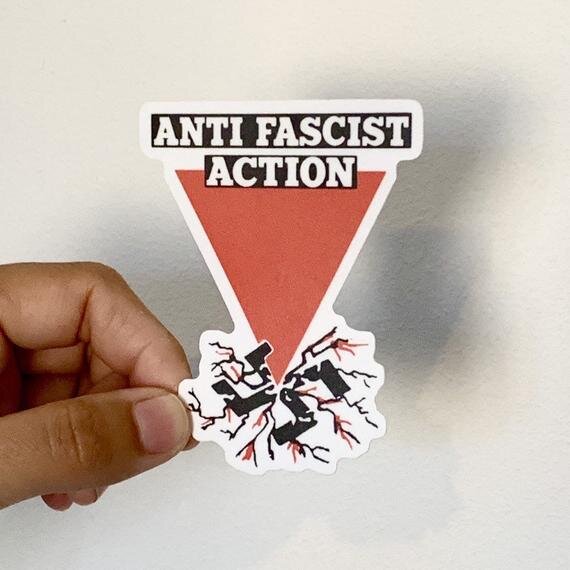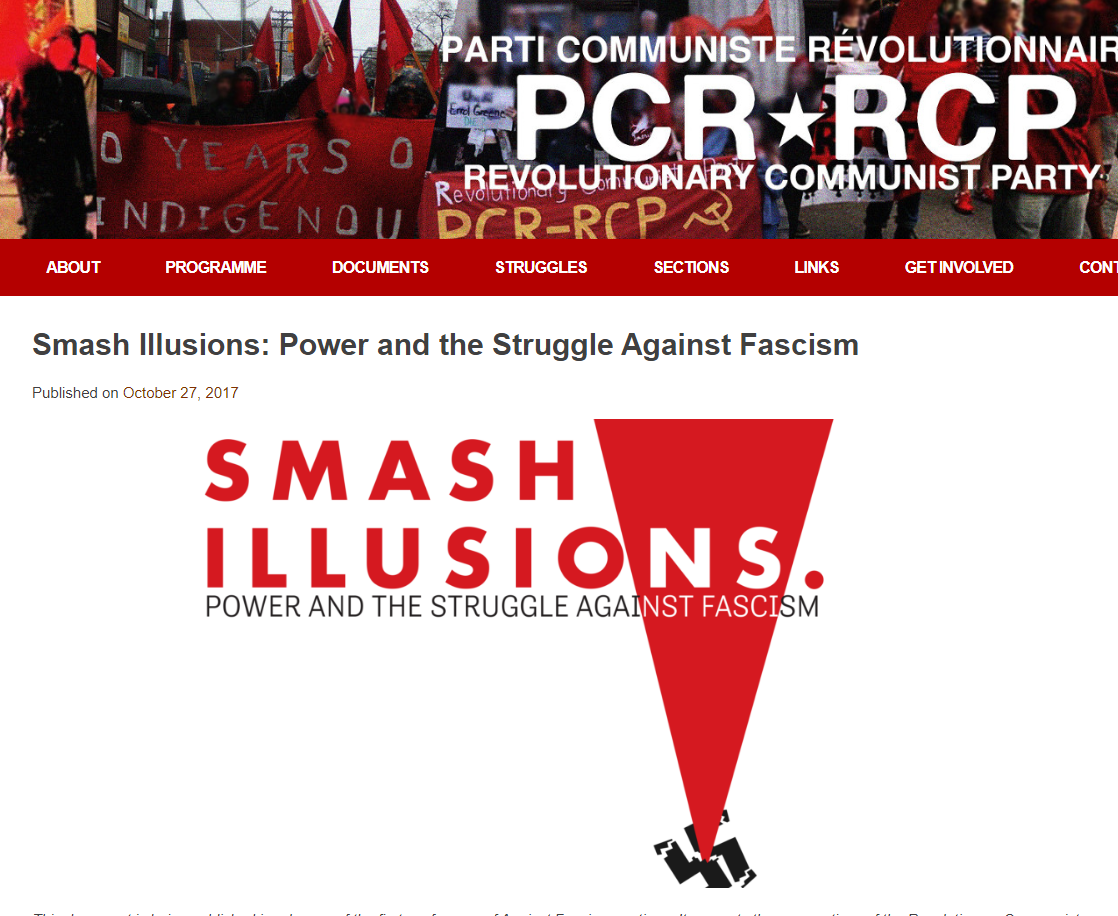Facebook's Trump campaign ad pull, explained
The gist: It turns out that after being used by the Nazis to mark Communist and other political prisoners, the inverted red triangle has indeed been claimed by the left, even anti-fascist groups, in Europe and Canada and among Twitter users, though not as Antifa’s main symbol by any means.
By TATIANA PROPHET
THE INTERNET — Around noon on Wednesday, conservatives began tweeting about Facebook deleting ads sponsored by the Trump campaign, under their “organized hate” prohibition.
The offending ad from June 18, 2020, pulled by Facebook.
“BREAKING NOW: Facebook DELETES ads from Trump's re-election campaign for 'violating policy against organized hate'... IS FACEBOOK TRYING TO SWING AN ELECTION?” tweeted Chuck Callesto, former candidate for Florida’s 3rd Congressional District.
Then the articles started coming out. The Daily News declared: “Facebook removes Trump campaign ad featuring Nazi concentration camp symbol” next to quite an orange-tinged image of the President.
Anti-hate speech Jewish groups began tweeting about what the offending ads contained: an inverted red triangle with a black border. From Bend the Arc aka @jewishaction came the tweet: “The President of the United States is campaigning for reelection using a Nazi concentration camp symbol. Nazis used the red triangle to mark political prisoners and people who rescued Jews. Trump and the RNC are using it to smear millions of protestors. Their masks are off.”
WaPo reporter Isaac Stanley-Becker did quite a bit of research on the symbol, accurately explaining that an inverted red triangle had been used in Nazi concentration camps to indicate political prisoners. When the political prisoner was Jewish, there was a yellow triangle superimposed over the inverted red one, he reporter.
Stanley-Becker did a thorough job, including looking to see if the inverted red triangle had been reclaimed by anti-fascist groups. To that end, he called up a historian of modern Germany at the Barenboim-Said Akademie in Berlin, Jacob S. Eder.
Anti-Fascist Action Vinyl Sticker Anti-Racist Laptop Decal Antifa Vintage Remake by RadBadgesUK on Etsy.
According to Eder, the reporter paraphrased: “Although certain symbols the Nazis deployed have been reclaimed, including the pink triangle used in concentration camps to label gay inmates, the red triangle has not been recast in a similar way.”
Eder continued: “I think it’s a highly problematic use of a symbol that the Nazis used to identify their political enemies,” he said. “It’s hard to imagine it’s done on purpose, because I’m not sure if the vast majority of Americans know or understand the sign, but it’s very, very careless, to say the least.”
According to Eder, the reporter paraphrased: “Although certain symbols the Nazis deployed have been reclaimed, including the pink triangle used in concentration camps to label gay inmates, the red triangle has not been recast in a similar way.”
Eder continued: “I think it’s a highly problematic use of a symbol that the Nazis used to identify their political enemies,” he said. “It’s hard to imagine it’s done on purpose, because I’m not sure if the vast majority of Americans know or understand the sign, but it’s very, very careless, to say the least.”
To be fair, it was difficult to find any antifa symbolism using the inverted red triangle — unless you search in Spanish. A political coalition founded by the Communist Party of Spain, called Izquierda Unida or United Left, uses the inverted red triangle as its symbol. So does the Revolutionary Communist Party of Canada, which calls for the destruction of the middle class (“bourgeouisie”) and the capitalist state. Looking further back, and the Bolshevik revolution used a red “V” as its symbol for the commemoration of that war from 1917 to 1922.
As most historians recall, communists in every nation formed the backbone of the opposition to Hitler and his National Socialist party. Communist Youth were organized to counteract Hitler Youth, or vice versa. It appears that somewhere down the line, the inverted red triangle went from an arm patch in the Nazi death camps to an emoji on Twitter.
A Trump campaign manager had claimed Facebook uses the emoji, but we could only find it on Twitter. And yes, some Twitter accounts use it to signify their commitment to socialism, communism, and anti-fascism. Spanish language web site todonexus.com states: “Nowadays, the inverted red triangle is used to pay homage to those who suffered under Nazi barbarism…For that reason there are individuals who wear it as a pin or place it on their social networks like Twitter beside their name. It’s a way of tagging those who support all who have suffered in a Nazi concentration camp.
“However, today there are also web users who use it as an anti-fascist symbol, and as we remember, fascism is a ‘political movement and form of government with a totalitarian, anti-democratic character’ [such as the one] created by [Benito] Mussolini.”
So while the inverted red triangle does indicate anti-fascism and antifa thinking, it is pretty obscure — unless you spend all your time reading Twitter in Spanish. It would be awesome to know which Trump campaign staffer falls into that category, and whether or not anybody had a conversation about using the more commonly recognized symbol of Antifa, which is a red flag over a black flag, both waving with leftist, anti-fascist fervor.
But because the inverted red triangle is in reality an anti-fascist symbol that has been reclaimed by the left, however obscure or unknown that reclamation might be, it seems clear that like so many decisions these days, Facebook made a premature call. This is a complex example of censorship, however, because given that many in the Jewish community are aware of the sordid history of the symbol, and not its leftist origins or reclamation, the use of it could be seen as by design to intimidate, rather than to discuss.
The more commonly recognized symbol for Antifa (created in Germany in 1930)
Perhaps our society should work on educating itself on the origin of many symbols and their various connotations so that a mere discussion of them does not bring the social media high council down on our heads, or a rush to judgment from your echo chamber.















